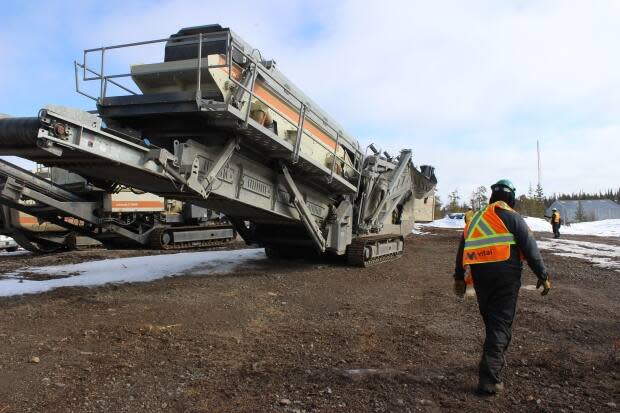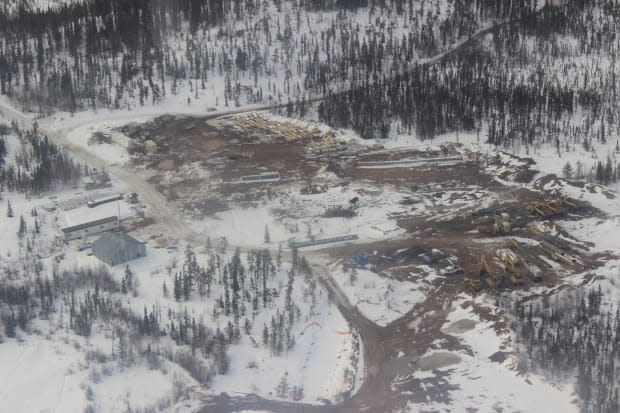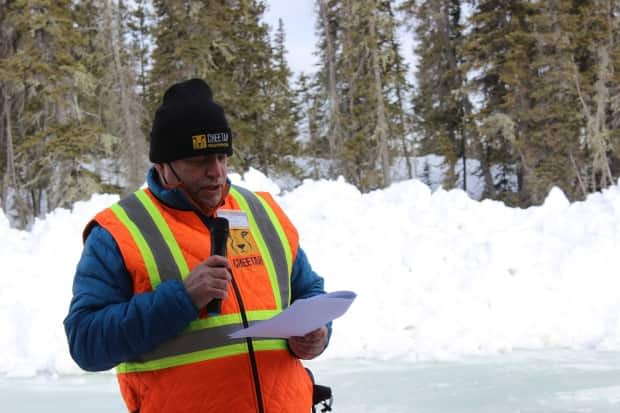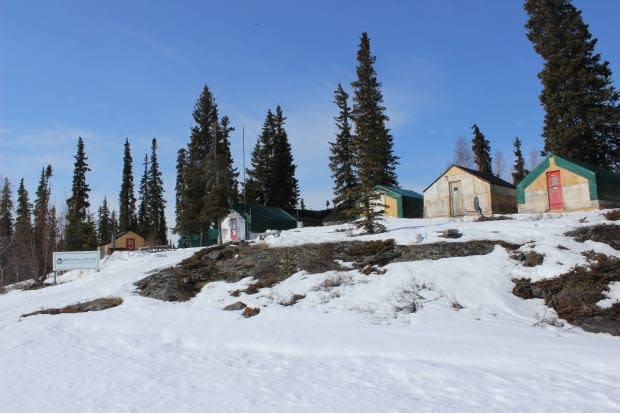Here's an inside look at Canada's first rare earth mining project in the N.W.T.

Kyle Bayha says he's been a minority at all of his past jobs.
But for the last five weeks, the Délı̨nę, Northwest Territories man has been working at the Nechalacho demonstration project as an employee of Det'on Cho Nahanni Construction Corporation.
There, about 110 kilometres southeast of Yellowknife, the workforce is 80 per cent Indigenous he said.
"Oh, it means lots," he told reporters.
Cheetah Resources, which operates the project and owns the resources near the surface of the rare earth deposit, invited media for a tour of Nechalacho on Monday. The company said it will be the first in Canada to produce rare earth — there are no current producers of rare earths in Canada — and the first in Canada to contract an Indigenous business to extract materials on their own territory.

Det'on Cho Nahanni Construction, partially owned by the Yellowknives Dene First Nation, signed the agreement early last year.
But something else that makes Nechalacho stand out from the several other mines where he's worked, said Bayha, is there aren't any tailings ponds.
"With this process that we've got here, I'm pretty happy to be environmentally friendly. I think reclamation will be a lot better. It'll just be a more clean reclamation."

Unique sorting process
Unlike mines that harvest the earth's gold and diamonds, the rare earth mine will not use any chemicals, explained David Connelly, Cheetah's vice president of strategy and corporate affairs.
The difference, he said, is they are the first in the N.W.T. to rely on a sensor-based ore sorter to do all the sorting in a single step — using x-rays and puffs of air to sort the ore into streams of waste rock and a rare earth concentrate.
"We anticipate about 600-thousand tonnes of rock will come out of the ground and about 100-thousand tonnes of that will end up being valuable rock," said Connelly.

The intent is to mine all the ore this year, from the North T Zone on the north side of Thor Lake, for the entire three-year demonstration project. The crushing and sorting, as well as the processing at a plant in Saskatchewan, will take place throughout the duration of the project.
"This will give us an indication of whether we go forward with full fledged mining activities," said Clarence Pyke, the mine's manager, of Mi'kmaq heritage, while standing in the clearing of what will soon become the mine's open pit.
A pair of heavy machines rumbled in the distance, as they knocked down a tree.
"Right now it's a small pit and basically to see what our product is going to be. Our overburden has to come off first, get down to the hard rock, and then start our blasting."

The rare earth deposit in the North T Zone has a radius of between 150 to 200 metres, according to the project's chief geologist, Chris Pederson.
"It's not going to be spiraled down like other mines in the North, that's why it's so small here. It's more like a quarry," said Pyke.
Phase two of the project involves mining a much larger deposit on the other side of Thor Lake, in what's called the Tardiff Zone. Pyke said it's too early to say whether that would also be like a quarry, or a spiral.
But Connelly said he has "no doubt" the project will move into its second phase.

Customers interested
Vital Metals, which owns Cheetah Resources, is about to break ground on a processing facility in Saskatoon, Sask., said Connelly. It'll turn the mixed rare earth concentrate into a mixed rare earth precipitate.

From there, it'll be sold to refineries that can isolate the 17 rare earth metals combined in the precipitate and turn it into individual products for use in technology.
The single largest and most important use for rare earth elements, according to Natural Resources Canada, is the manufacturing of magnets that can be used in cell phones, computers, wind turbines and electric vehicles.
REEtech, a company in Norway, said Connelly, has already pre-purchased the majority of mixed rare earth precipitate that'll come from the demonstration project and has expressed interest in buying five times that amount, five years from now.
Cheetah Resources owns surface-level resources at the mine, which means the first 100 metres of material below the surface of the ground. Avalon Advanced Metals, which originally developed the rare earth deposit, owns the resources found below that.
Connelly said Cheetah Resources has also had conversations with mixed rare earth refineries in Korea, Estonia, France, Japan, Malaysia, India and China so far.
"We're going to have a mining process here that we think is revolutionary, in the world, in terms of respecting the land and the water," said Connelly. "The question is — at what scale."

 Yahoo Movies
Yahoo Movies 